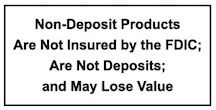Pet Budgeting – Planning and Managing Expenses for Your Pets
Pets can bring excitement, love and happiness to our lives which is exactly why so many people have an animal companion. However, making the decision to get a pet is a serious decision and therefor is not a choice to take lightly. Remember, with great reward comes great responsibility.
In all the exhilaration and anticipation of bringing a new pet into our home, we sometimes underestimate the full cost of caring for and maintaining our furry friends. We may think of the food, treats, and toys that we will buy for Fido or Whiskers, but we also need to think about vaccinations, checkups, training classes and other maintenance for your pet’s well-being.
North Brookfield Savings Bank offers a Life Goal Savings Account which can be used to save for a specific purpose of your choosing. This account can help you save for a purchase of a new pet, for a pet’s initial and ongoing costs, and can help to establish a pet emergency fund for unexpected expenses.
Learn more below about the expenses you may encounter as a pet owner and follow these tips that can help you and your furry pet companions to have a long, happy life together.
YEAR ONE: The Initial Cost of Pet Ownership
Purchase/adoption fees: Depending on the type of pet you are looking for, the cost can be as high as $1,500.00 or more. This is a great time to consider “rescuing” a pet. Many animals are currently in shelters and looking for their forever home. This can be more cost effective as well as giving that animal a second chance living a great life – with you!
Spay or Neuter: If you don’t want to have additional expenses from tinier baby versions of your animal friend, it is important to spay or neuter your pet. On average, it can cost $200-$800 to spay or neuter your pet. This does not include initial vaccinations and exam.
Vaccinations and Exam: Initial vaccinations and exam can cost typically $75-$120. It can be more cost effective to research local veterinary clinics in your area to see what their pricing structure is. Sometimes a shelter or humane society can offer less expensive options for these services and may be less expensive than a vet.
License: Depending on what pet you choose you may need to register them with the town you and your pet will reside in. This usually costs between $10-30 annually, per pet.
Comfort, Training & Grooming: Expect to spend a few hundred dollars on the set up for your new friend. Many of these items are one-time purchases (ex. / Crate, Bed, Collar, Leash, Food Bowls, Training Pads/Cat Box) whereas others will be needed on a monthly basis (Food and Flea Medications). You will want to call different training schools and groomers to learn about their services and what their associated costs are for those services.
Tip: Search your local consignment shops, tag sales, and online. Many of these items can be found secondhand and are cheaper or free, based on where you look.
YEAR TWO & BEYOND: Maintaining a Healthy Pet
Ongoing Expenses: The continued expenses for each pet you own do vary based on a number of factors including type of pet, size of animal, cost/quantity of food, other ongoing items such as litter or shavings, and the cost of annual checkups and vaccinations.
Pet Insurance: Many companies offer pet insurance, for as low as $15 monthly, you can get you peace of mind and help defray the costs associated with checkups, medication and unexpected emergency visits.
Other Non-Financial Costs of Pet Ownership:
Now that you have considered the financial aspect of pet ownership, it is just as important that you take the time to consider the emotional and physical needs of your desired pet. These are things to consider before choosing a pet:
- How much exercise will this pet require?
- Can we offer enough space for this pet?
- Am I committed to train this pet?
- What kind of pet will fit best with my family?
- Who will care for my pet while I’m at work?
- Does my landlord allow pets?
Time & Attention: As these furry friends are new to us, remember that you are new to them. Your home and all this “new” stuff is strange to them. Keep that in mind when considering your schedule. Is this animal ok on his or her own, then that is great! However, many of our furry friends get nervous being left in a new place alone. If you come home to destroyed furniture, or clawed up doorways, then it may be time to consider a pet sitter, which could be an additional expense to budget for.
How to Budget For Your Pet
Once you have researched all of the costs associated with your pet, compile all of the expenses you will spend annually for your new pet after the “year one” expenses. Add all of these expenses together and divide by 12 months to give you a rough estimate of what you should prepare to come out of your budget monthly. This will give you a better idea of how much to start saving in your North Brookfield Savings Bank Life Goal Savings Account and get you closer to making memories with your beloved pet companion.

